Is content design UX writing?
Page last updated: 14 July 2025
Contents
Who’s designing this content in my containers?
The word ‘content’ is thrown around a lot in the design industry.
The word ‘content’ comes from the late Middle English language which itself is derived from the word contain. There’s a lot of definitions online that speak to the same point, though the clearest understanding is: “the subject or ideas contained in something written, said, created, or represented”. ‘Content’ itself means the information held within - but what is its container?
A container can be anything:
And, our online world is filled with content creators sucking up everyone’s last drop of dopamine.
But what is content actually? We seem to have a nebulous idea of it, but what is its actual definition?
The word ‘content’ comes from the late Middle English language which itself is derived from the word contain. There’s a lot of definitions online that speak to the same point, though the clearest understanding is: “the subject or ideas contained in something written, said, created, or represented”. ‘Content’ itself means the information held within - but what is its container?
A container can be anything:
-
This amazing article you are reading.
-
This website.
-
A doom-scrolling app.
-
A nice book to read with a cup of tea.
-
Either an Oscar-winning movie or the worst-made movie ever.
Examples of different content containers
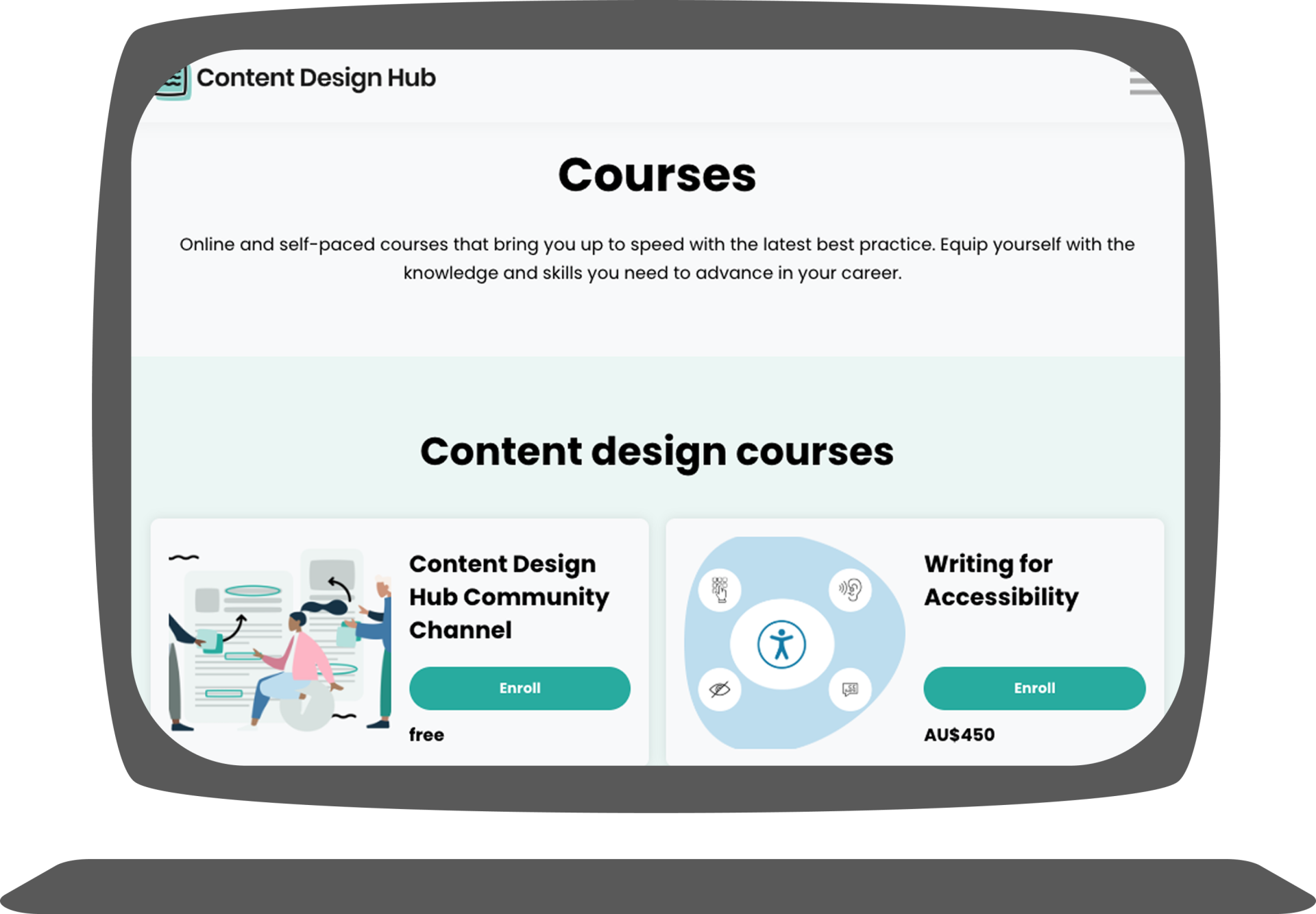
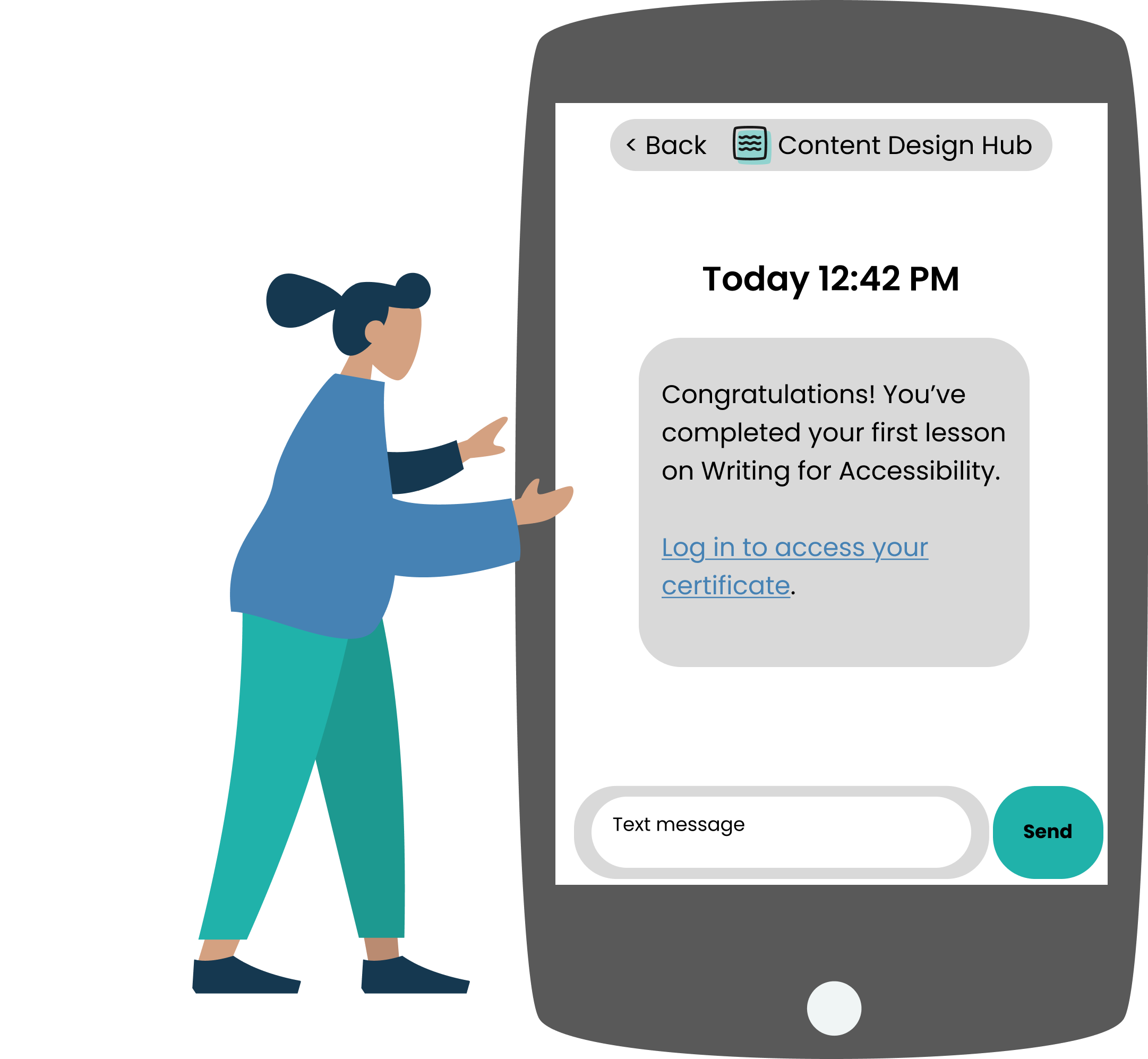
The content designer's role in creating digital content
However, this is only the end product; it's not the only thing that has content in it. This is where content designers start to separate themselves from user experience (UX) writing.
Content designers create the content form and the content itself. For example, their research will lead them to create the format the user needs (e.g. a form, service filter, infographic, checklist, and so on). Whereas a UX writer may be just given the format.
The UX writer is inside a frame, looking out at the user. A content designer is outside the frame (wider scope), looking into their bag of tricks to see what they need to pull out.
Take note
Content designers - even though they write, and well - also take a step back from this position and look at the entire project in its entirety.
The difference between service, solution and content designers
Content design is usually considered a high-level design role - similar to that of a service or solution designer.
Service designers focus on designing the end-to-end user journey.
They can also be quite technical in their discoveries - such as, drafting and creating IT policy and/or strategy to implement into a government department.
Solution designers work with information architects, product managers and executives.
They explore the possible technical stacks and limitations - creating guardrails and constraints that products can be developed in.
Content designers sit in the governance space of the project.
They facilitate the governance of the front-end designs created by UX writers and digital designers. It's a collaborative role that links the project to the product.
How content designers are involved in UX prototyping
It's not to say content designers don’t get to have fun down in the weeds. A content designer has to sometimes flex their prototyping muscles. They can dive into the detail levels and produce prototypes, proof of concepts and deploy UX writing.
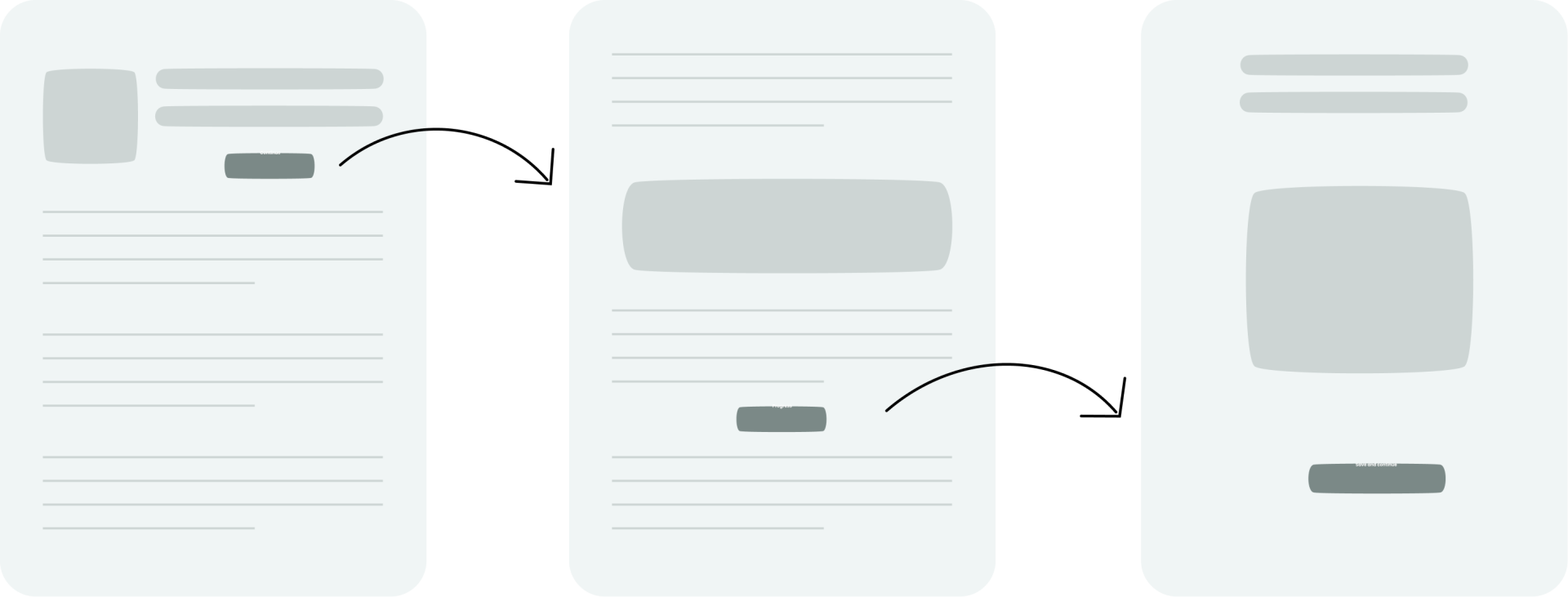
How content designers collaborate on designs
So what does a content designer's involvement in prototyping look like in a project? Let’s use a theatrical analogy. Setting the stage for some of the drama at play!
Content designers set the stage and direct the play while other design principles form crew and cast.
Service and solution designers
are the tech (lighting and sound) crew: they understand the tech that this project is being built upon. So, they can understand the importance of the sound and lighting for the stage to further enhance the production.
Information architect designers
are back of house: they know every nook and cranny of the stage area; they know which part needs to interact with each other at the correct time. They make sure that the cast are in the correct spots so they can come out on stage and perform.
Digital designers
are the ushers and front of house: they make the promotional materials - playbills, posters, and signage and guide the user to their seats.
UX writers
are the playwrights: they write the scripts for the cast to follow for each scene. They ensure each player knows how to act and behave - to evoke emotion and elicit a response from the audience. A great playwright (UX writer) stirs that emotion to make the audience participate with a call to action.
Content designers
are the directors of the show: they orchestrate all elements of the play. They lead the holistic cohesion here - bringing together the concept into a final product. They try to meet customers expectations - through hopefully, seamless and intuitive scenes without friction. They identify and see which areas are impacted or potentially cause issues. They work with each cast and crew member to make the production work for opening night and the rest of the run. They add what is missing and what the needs are of our customers at the correct and exact moment.
Who is the star of the show? Who leads and owns the design?
One thing not yet mentioned...who are the cast members? Everyone involved in the production - all of the roles in the play, and including the audience - can also be current or future customers. The interaction between concept, cast, crew and crowd, are important. This is why research, data and analytics are so important in defining the direction of the whole design.
Content designers are responsible for setting and managing the tone and voice of the project. They set the standard of how and what the project says to the audience. In everyday life, these are the customers and users and end-users.
Depending on the size of the project or content team and how far down the project’s timeline, it can be a content designer's responsibility to play most if not all of the roles discussed.
If you are part of a smaller design team within a project, for the designs to work well you must understand the requirements needed to understand the overarching requirements to achieve the project goals.
Content courses and training
At Content Design Hub, we give you the skills and strategy to learn, grow and invest in content. In return, you’ll create inclusive digital worlds that speak the language of your users.
Courses
Take the course, Writing for Accessibility.
Coaching
Get 1:1 or team training through coaching.
What is UX writing?
UX writing is the practice of crafting clear, concise and user-focused text for digital interfaces (apps, websites, and software). A UX Writer guides users through digital interactions to help them accomplish tasks seamlessly. In most cases, 'text' is referred to as microcopy because it needs to fit within a product's UI.
Ok, but don’t content designers do UX writing? The answer is: Yes, and more.
UX writers work collaboratively with the content designer to make sure the voice and tone of the project are met, and are informed by the customer. UX writing focuses on the niche of the screens without necessarily needing to know the tech under the hood.
Ok, but don’t content designers do UX writing? The answer is: Yes, and more.
UX writers work collaboratively with the content designer to make sure the voice and tone of the project are met, and are informed by the customer. UX writing focuses on the niche of the screens without necessarily needing to know the tech under the hood.
Content designers work with design and development teams to understand the tech and programs used. This helps determine what can be written and how to write it.
Giving feedback on high and low fidelity prototypes
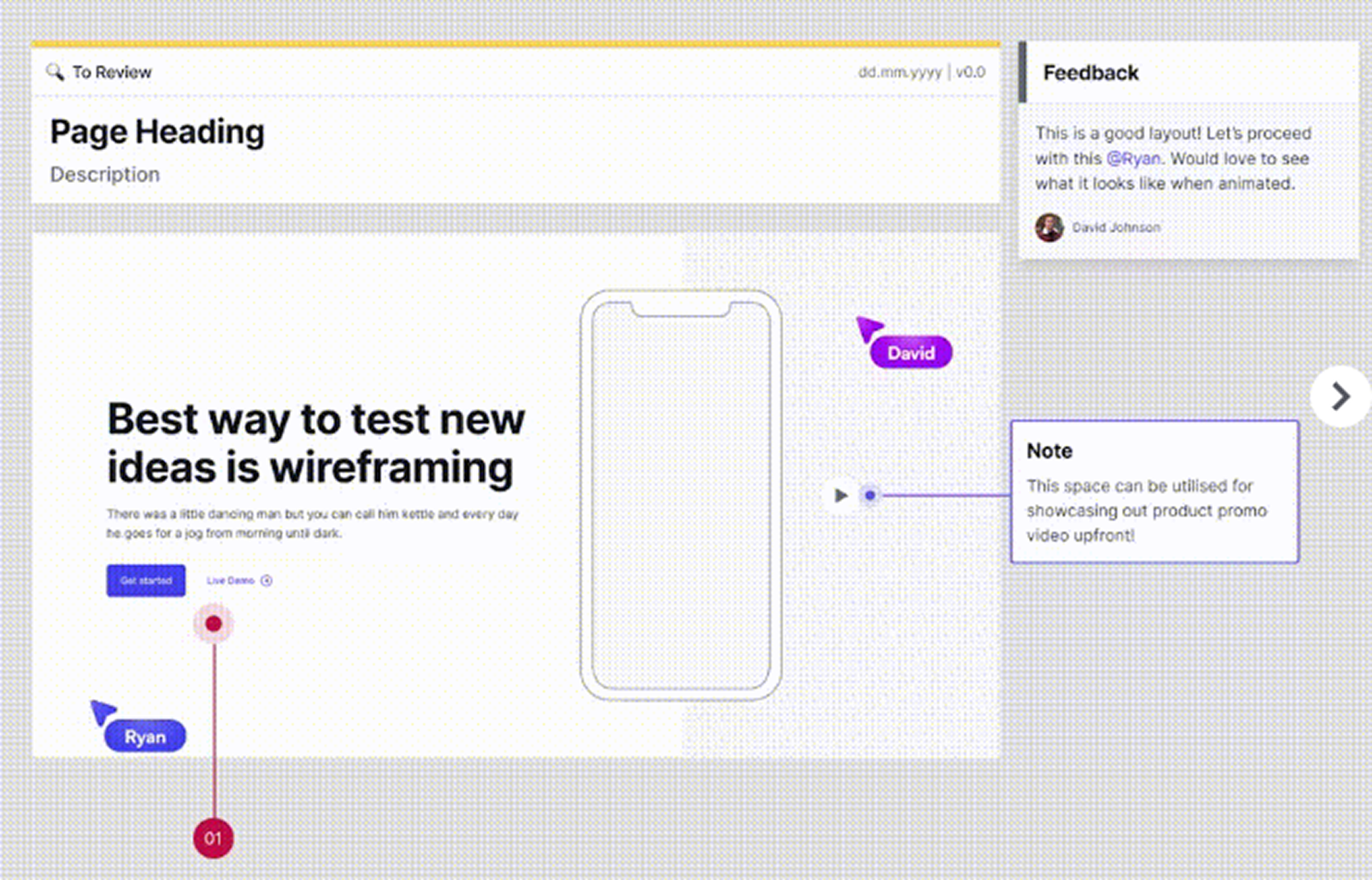
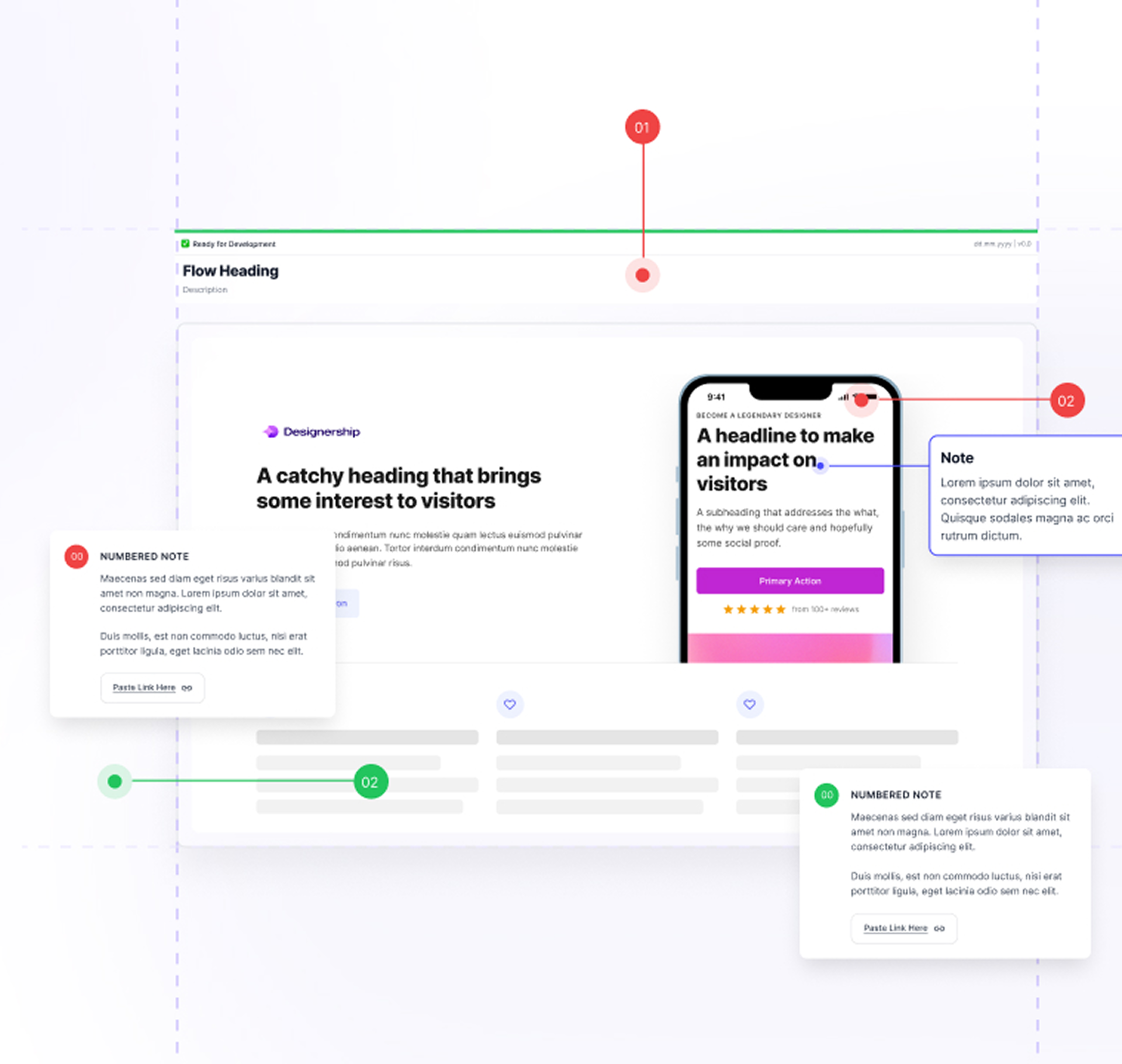
UX writing is quite a creative pathway. Not only do UX writers help the team of designers with what appears on the app or website (both wording and design components) but they have a voice in how the digital product is navigated by the user.
A good UX writer can lead the customer down the path of actions required in what seems like a seamless and an intuitive way.
Example
A movie needs a poster. The UX writer will create the poster and say what is on it, based on its audience. The content designer will tell the UX writer what the movie is about, what size the poster should be and concepts of what should go on the poster.
Based on all the intel from the content designer, the UX writer shouldn’t make a postcard about a rom-com when the movie is a superhero movie that needs an A2 print.
Based on all the intel from the content designer, the UX writer shouldn’t make a postcard about a rom-com when the movie is a superhero movie that needs an A2 print.
What’s different about UX writing and content design?
Content design - even though its primary focus can be on the writing of the content itself - expands across the whole breadth of the project or program.
Depending on the maturity of an organisation or size of a design team, a content designer can wear many hats to suit any need at any given time. A content designer can be involved in any or all of the following.
Depending on the maturity of an organisation or size of a design team, a content designer can wear many hats to suit any need at any given time. A content designer can be involved in any or all of the following.
Project governance
Different from project management, governance ensures every part of the whole project aligns to the overall user experience.
Cohesion
Sometimes, large projects have multiple teams working on various functions or specific areas. The teams can work in tandem or in silo from each other.
The content designer and other design leads navigate and provide valuable insight and user feedback to redirect the project back to user-focused content outcomes and business goals.
Even though they may use the same design system or language, how the components apply in the user journey may vary.
The content designer and other design leads navigate and provide valuable insight and user feedback to redirect the project back to user-focused content outcomes and business goals.
Applying style guides
Sometimes content designers will create new, user-informed style guides for a project if user and market research suggests it’s imperative to do so. However, many projects follow pre-defined, publicly-available style guides.
-
Australian Government Style Manual: https://www.stylemanual.gov.au/
-
GOV.UK: Government content and publishing: https://www.gov.uk/government/content-publishing
Stakeholder engagement
Stakeholders have an invested interest in the project. They’re not just executives that oversee the project. They can be people in different areas of the team, project or company that have some direct or indirect involvement. Any time something is showcased or presented, it is to a stakeholder. Content designers often advocate for, educate on and present concepts and designs to key stakeholders. This is part of an iterative design process. It’s vital that content designers stand strong with their design decisions, and are able to verify and justify why and how the project looks that way.
Standing strong in design
Content designers make data, analytics and research-informed content decisions. They're not backed by opinion; they're backed by facts. There's always time for user research. Depending on budget and time, this could be desktop research, reviewing available customer data and feedback, or designing and running your own research. Every decision is evidenced based, so you can feel confident when backing your design choices.
With evidence-based designs and changes, it is easier to talk through design decisions with stakeholders because they are grounded in data, analytics and consumer insights.
With evidence-based designs and changes, it is easier to talk through design decisions with stakeholders because they are grounded in data, analytics and consumer insights.
Managing difficult stakeholders
Not all stakeholders will agree with your work. Sometimes the disagreement is based on facts; sometimes it's not.
Some may make decisions based on confirmation bias and/or authority bias manipulation. Some may choose to ignore the evidence and “go with their gut feeling”, even if that gut feeling is incorrect.
One of the more effective ways to help get stakeholders onside is to bring stakeholders along on the journey - not just showing the end result. Having the person included in research or some of the design conversations, even if just a passive participant, can change minds. As a content designer, there will be ample times you need to be polite and listen to their opinions. However, if it’s just opinion, then it’s a content designer’s job to showcase the facts, educate on content expertise and advocate for the user. When talking about user data, analytics and insights, there will be more stakeholders on your side than not!
Some may make decisions based on confirmation bias and/or authority bias manipulation. Some may choose to ignore the evidence and “go with their gut feeling”, even if that gut feeling is incorrect.
One of the more effective ways to help get stakeholders onside is to bring stakeholders along on the journey - not just showing the end result. Having the person included in research or some of the design conversations, even if just a passive participant, can change minds. As a content designer, there will be ample times you need to be polite and listen to their opinions. However, if it’s just opinion, then it’s a content designer’s job to showcase the facts, educate on content expertise and advocate for the user. When talking about user data, analytics and insights, there will be more stakeholders on your side than not!
UX research and operations
UX research is, unfortunately, one of the areas in a project that may not be prioritised, decommissioned or not used at all. However, when used correctly it can make a world of difference for the product you are designing for. It uncovers the core and true design journey the project must travel. A designer always has their own biases; that is human nature. A good or even great designer is aware of this and wants its customers to be the true guides of the experience. Designers have a clear mental model (picture) of the product, but sometimes that doesn’t get translated into the product itself. When designers become an expert on every area within the project, they can miss the minute details within.
Empathy, the hidden superpower
Empathy is a tremendous soft skill to have as a content designer, or as a human being in general. Having empathy gives you insight into the type of customer that is testing your product. Understanding the person, their background and even cultures can help provide context to yourself outside of the immediate impact they have. When you understand the contextual space in which your product sits, you can improve the product for your end-users.
Tip: treating your customer needs as essential, not a nice to have
An Australian First Nations Indigenous person or business, especially in rural and regional places, treats the business as an arm of the community and family. Most of these businesses are to support the community, not to build a profit, but as a community requirement. So, they treat products and services as a must: if it is not essential to them, they will not use it.
Working with beginner vs. expert users
It’s vital to understand the type of user you are presenting your product to. Is your user a beginner or an expert in using your product? Is this product new, or is it replacing an existing product? Is this the first time your user will interact with a product like this?
Expert users in user research can come across as direct or judgemental. For example, “Why isn’t this like this product that I already use?” or “Why should I use this?”
Beginners need a helping hand with the product. Not only should the product be naturally intuitive and have similar components to industry standard, but it should be well understood, with clear and precise language. When a content designer spells out what the customer can do, the product can be more easily adopted. It is up to the content designer to build the full experience (including tone and voice) for the product to help the customers through their journey with the product.
Expert users may have cognitive biases for the market, industry or product. Customers that have done processes multiple times know what they want and need to get the job done. They may be less interested in new bells and whistles (functionality) if it doesn’t help to get the job done ASAP.
Expert users in user research can come across as direct or judgemental. For example, “Why isn’t this like this product that I already use?” or “Why should I use this?”
Tip: use your key insights to support your design decisions
Compile a record of each UX research piece. Gather all of the observations, findings and key insights into a pack to share throughout the project as evidence to support your designs. When someone asks "why?", you'll have user research that explains content decisions.
Information architecture
Information architects are wizards at understanding the complexity of the tech stack. Good architects understand the technical limitations, the policies, and the legalities of what the project can and cannot do. This fundamentally creates the guardrails and container walls of what can be designed and built.
Content designers, along with solution and service designers, work collaboratively with the architects to develop the high-level user design scaffolding for the project overall. This framework is then delivered to the executives to showcase what is possible for the project or product to become.
Content designers can take on the role of 'mini' information architects. For a website redesign, they may design labels in a user-friendly way, or advise on how to organise information based on user research.
Content designers might conduct card sorting or Treejack testing to inform the design of the information architecture (IA), and they can also baseline metrics and measure improvements from the original IA to the proposed. A content designer can really affect the design, structure and presentation of an IA.
Content designers, along with solution and service designers, work collaboratively with the architects to develop the high-level user design scaffolding for the project overall. This framework is then delivered to the executives to showcase what is possible for the project or product to become.
Content designers can take on the role of 'mini' information architects. For a website redesign, they may design labels in a user-friendly way, or advise on how to organise information based on user research.
Content designers might conduct card sorting or Treejack testing to inform the design of the information architecture (IA), and they can also baseline metrics and measure improvements from the original IA to the proposed. A content designer can really affect the design, structure and presentation of an IA.
Example of an information architecture

So, is it content design or UX writing?
We’ve covered some of the main areas that content designers are a part of in their role on a project. UX writers, even though they may be involved in some of this work, are not across all of them.
UX writers are super helpful because they make the copy experience more intuitive for the customer.
A content designer takes it a step further, and depending on scope of the project and size of the team, may also help out with:
A content designer takes it a step further, and depending on scope of the project and size of the team, may also help out with:
-
project governance stakeholder management
-
UX research and operations
-
information architecture.
In other organisations and projects, they also help lead:
-
marketing and communications teams to write user-centred content
-
content learning, development and capability content components in design systems
-
project strategy.
Now that we’ve unpacked a clearer picture of areas that content designers help out with, do you need help with your content or digital services? Contact us.

Author bio
Caden Adam has over a decade of experience delivering enterprise content and design. He also supports government networks: First Nations (Bigambul descendant), Neurodiversity and Design. Outside of work, he is an avid still film photographer.
Upskilling
Content design coaching
Upskill into content design with a free 30-minute coaching session. If you're not sure where to start, we can help with that too!


Content Design Hub is a marketplace for individuals and companies to learn, upskill and invest in specialised content skills.
We're grateful to the Traditional Owners of the lands throughout Australia on which we live, learn and work. We pay our respects to their Elders, past, present and emerging.
Policy pages
Social media
Copyright © Content Design Hub 2025. All rights reserved.

